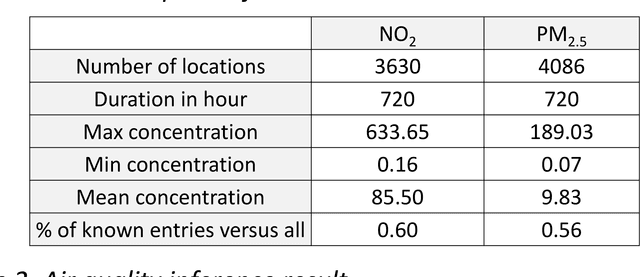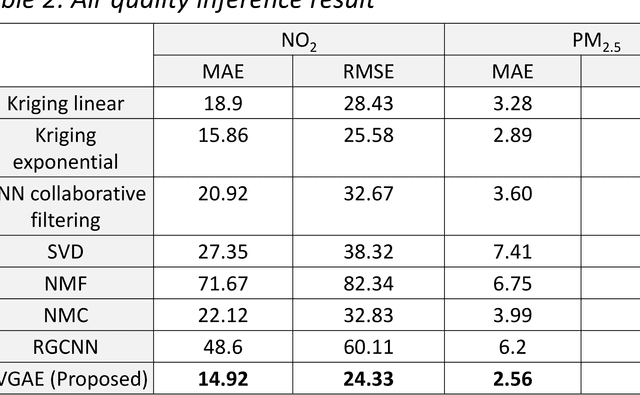Frank Pasveer
Matrix Completion With Variational Graph Autoencoders: Application in Hyperlocal Air Quality Inference
Nov 05, 2018

Abstract:Inferring air quality from a limited number of observations is an essential task for monitoring and controlling air pollution. Existing inference methods typically use low spatial resolution data collected by fixed monitoring stations and infer the concentration of air pollutants using additional types of data, e.g., meteorological and traffic information. In this work, we focus on street-level air quality inference by utilizing data collected by mobile stations. We formulate air quality inference in this setting as a graph-based matrix completion problem and propose a novel variational model based on graph convolutional autoencoders. Our model captures effectively the spatio-temporal correlation of the measurements and does not depend on the availability of additional information apart from the street-network topology. Experiments on a real air quality dataset, collected with mobile stations, shows that the proposed model outperforms state-of-the-art approaches.
 Add to Chrome
Add to Chrome Add to Firefox
Add to Firefox Add to Edge
Add to Edge